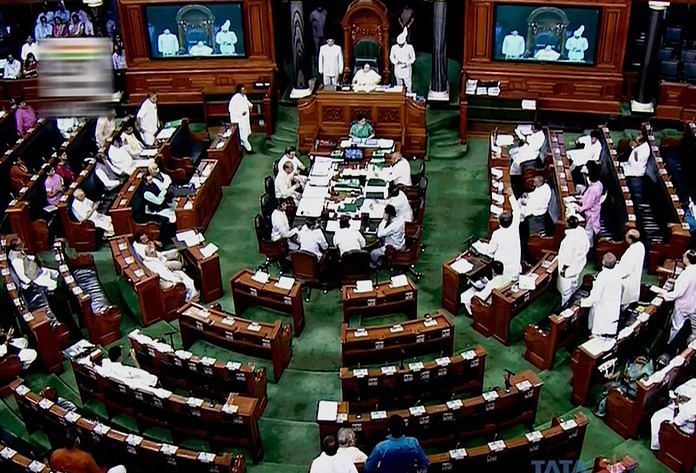New Delhi: The 17th Lok Sabha, elections to which finally ended Thursday with a dazzling mandate for the Bharatiya Janata Party (BJP), will be a younger House with a greater representation of women than the outgoing one. It will also have more MPs with school degrees, but fewer first-timers.
In the 543-member House, the BJP has won a decisive 303 seats, leaving the Congress with just 52. Of the total, 397 MPs were elected from national parties: Bharatiya Janata Party (BJP), Congress (52), Bahujan Samaj Party (10), Communist Party of India (2), CPI-Marxist (3), Nationalist Congress Party (5), and the All India Trinamool Congress (22).
But what stands out in this election is how this Lok Sabha is bucking the trend of an “ageing” House. According to data compiled by the non-profit PRS Legislative Research, 12 per cent of this Lok Sabha’s members will be below the age 40 years, against 8 per cent in the preceding House.
Younger Lok Sabha…
In what came to become a trend, successive Lok Sabhas have seen fewer young MPs. The proportion of MPs below 40 years declined from 26 per cent in the first Lok Sabha (formed) in 1952 and 22 per cent in 1967, to 18 per cent by 1984, 14 per cent by 1999, and just 8 per cent the last time.
Meanwhile, the share of MPs aged above 71 years steadily increased, up from none in the first Lok Sabha to 5-7 per cent in the mid nineties, and as many as 13 per cent in the outgoing Lower House.
Their share stands at just about 6 per cent in the 17th Lok Sabha. A possible reason for this could be the high number of seats won by the BJP and its unwritten policy of not giving tickets to those above 75 years. It’s this policy that is said to have seen veteran leaders like L.K. Advani, Murli Manohar Joshi, Bhagat Singh Koshyari and Sumitra Mahajan, who turned 75 just last year, bow out of the race.
The average age of a Lok Sabha MP is now 54 years.
Interestingly, women MPs are six years younger than their male counterparts in the 17th Lok Sabha.
Also read: The Modi wave is real — BJP wins 80% of seats PM held rallies in
…But fewer first-timers
The age profile of the Lok Sabha may be younger, but the number of first-term MPs has gone down marginally. There are 300 debutant parliamentarians in the Lok Sabha, against 314 the last time.
From the outgoing Lok Sabha, 197 MPs have successfully dodged the anti-incumbency sentiment to be re-elected, and there are 45 who have been members of earlier Lok Sabhas as well.
A healthier gender balance
While debate around the bill to provide 33 per cent reservation for women in Parliament continues, this Lok Sabha seems poised to be more gender-balanced than the last one.
Of the 716 women who were in the fray, 78 managed to win as compared to 62 out of 670 in 2014. Thus, this time, 14 per cent of Lok Sabha members will be women, as compared to 11 per cent in the outgoing House. This, however, still remains an abysmally low number.
The silver lining is how this number has gone up over the years, from a mere 5 per cent in the first Lok Sabha.
The slight boost this election could possibly be because regional parties like the Trinamool Congress and the Biju Janata Dal ensured at least a third of their tickets were given to women.
The education factor
Another change in the 17th Lok Sabha is the election of more candidate who have cleared Class XII.
While 27 per cent of the new MPs fall in this category, the figure stood at 20 per cent for the 16th Lok Sabha — a figure that had remained around the same level since the 1990s. However, the earlier Lok Sabhas had far more Class XII graduates.
Also read: BJP-Shiv Sena’s massive win sweeps away bitterness, could help cement once-shaky alliance






